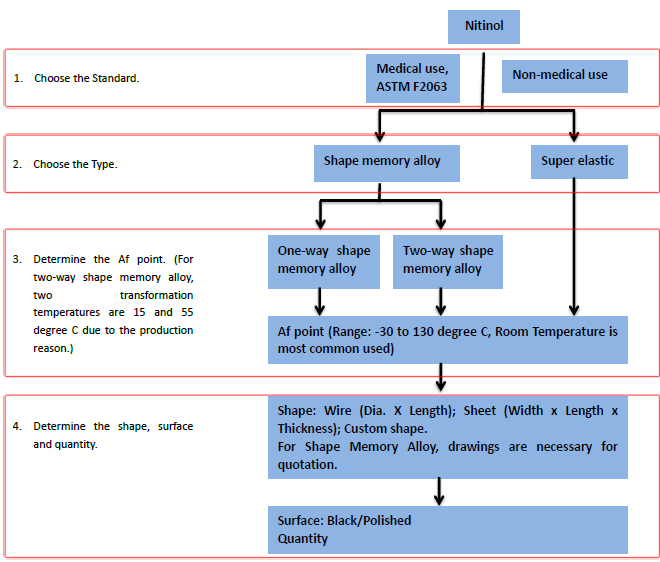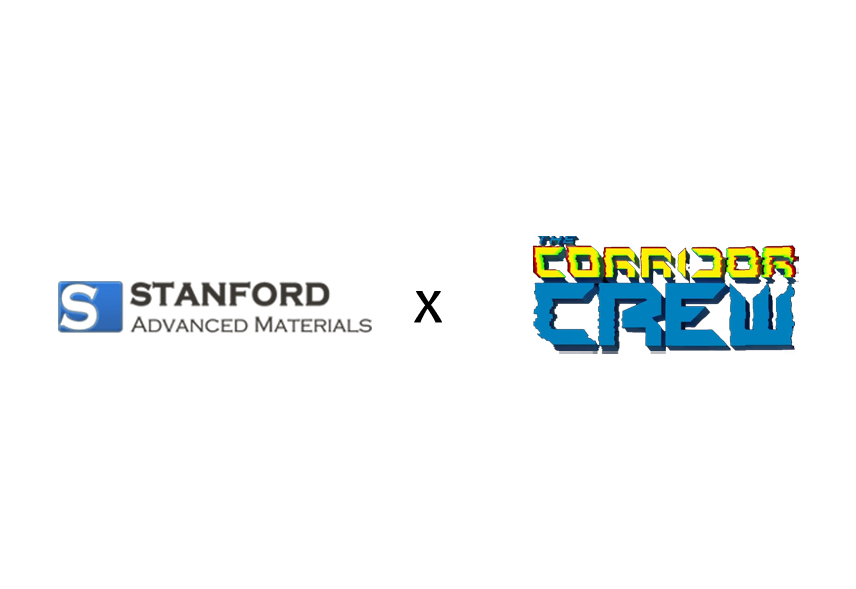How to finalize your demands for nitinol
Nitinol (Nickel Titanium)
Nitinol is a metal alloy of nickel and titanium, Nitinol alloys exhibit two closely related and unique properties:
Shape memory effect: Shape memory is the ability of nitinol to undergo deformation at one temperature, then recover its original, undeformed shape upon heating above its "transformation temperature".
Superelasticity: Superelasticity occurs at a narrow temperature range just above its transformation temperature; in this case, no heating is necessary to cause the undeformed shape to recover, and the material exhibits enormous elasticity, some 10-30 times that of ordinary metal.
Af point: Final temperature for a martensite to austenite transition. The nitinol shows its superelasticity or shape memory above the Af point. (What is the temperature do you want the nitinol to become superelastic or recover its original shape?)
One-way shape memory alloy: The product can be deformed under Af point by external force, it will back to its original shape when heating over Af point temperature.
Two-way shape memory alloy: The product can be one shape under lower temperature and be another shape when heating over another higher temperature, the process is automatic.
How to finalize your demands?




